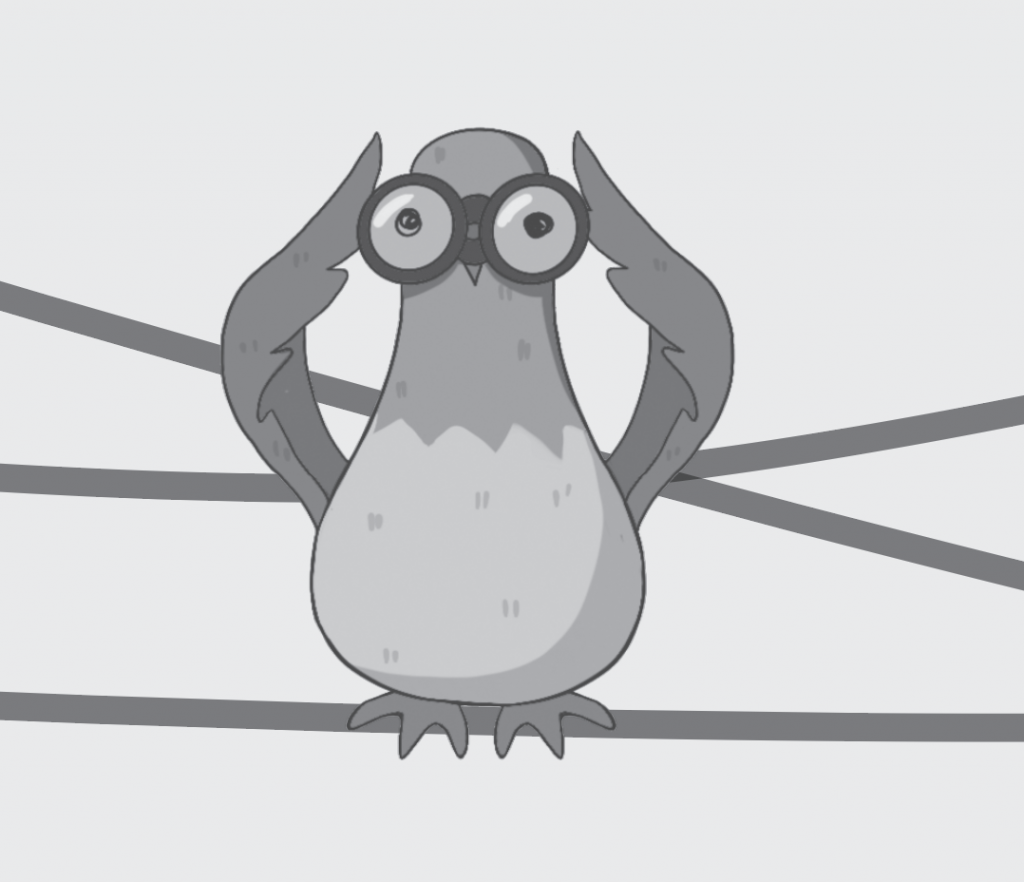“All of the birds died in 1986 due to Reagan killing them and replacing them with spies that are now watching us. The birds work for the bourgeoisie.”
This iconic line is recognizable to hundreds of thousands of people. From circulating around Reddit, Instagram, TikTok and ironically, Twitter, this peculiar ideology has won over the hearts of teens and young adults alike with its seemingly absurd nature.
The Birds Aren’t Real movement was technically created in 2017 by college student Peter McIndoe, but he likes to say otherwise.
“I did not start Birds Aren’t Real,” McIndoe says. “The movement has existed since 1976, I am simply a representative!”
 The ideology of the movement centers around the idea that between 1959 and 1971, the CIA took out 12 billion birds and replaced them with avian-like robots designed to surveil the American population. It has amassed an estimated 276,000 followers across Instagram and Twitter, most of whom are teens.
The ideology of the movement centers around the idea that between 1959 and 1971, the CIA took out 12 billion birds and replaced them with avian-like robots designed to surveil the American population. It has amassed an estimated 276,000 followers across Instagram and Twitter, most of whom are teens.
“It [Birds Aren’t Real picked up] probably around 2017, when some of our flyers began making the rounds on Reddit,” McIndoe says. “It was part of our movement’s strategy to ‘weaponize virality’ in an effort to get past government censorship tactics. The thought was — how can they censor something viral?”
Along with government censorship on the Birds Aren’t Real movement — however crazy that might sound — what makes the movement stand out is that it doesn’t even make an attempt to sound plausible. For many teens, the absurd and far-fetched humor is what draws them in.
Most recently, in a message released on the movement’s Instagram account in September, McIndoe announced Birds Aren’t Real’s candidacy for president — as a whole movement.
“If you consider yourself to be a bird truther or part of the movement, you are now running for president of the United States,” McIndoe proudly says.
View this post on Instagram
Spreading the feathered gospel
Though it started as a social media movement, Birds Aren’t Real rapidly expanded into both a comical pop culture reference and an online clothing brand. From its large social media platform to its “Bird Brigade” — a group of “bird truthers” tasked to spread the message of the movement through social media and other means — the conspiracy has become a token of the Gen Z population.
“Sometimes I see a bird and it’s like, are you real?”
— Marina Buendia, senior
For Palo Alto High School senior Andrew Toteda, discovering the movement was as simple as scrolling through his favorite Reddit pages. Though Toteda frequents the site to stay updated on his hobbies and world news, he sometimes stumbles upon the latest in meme humor.
“It [the movement] was one of the many satirical conspiracies that Redditors like to discuss, because often many Redditors haven’t heard the joke before,” Toteda says. “It quickly became a thing where all of those ‘in the know’ would discuss robotic birds in the comment section like they were real.”
 Another tactic the Birds Aren’t Real movement uses to spread the message is through having their own merchandise: though it’s not a common occurrence to see a person in Birds Aren’t Real apparel, its popularity among Paly students is growing.
Another tactic the Birds Aren’t Real movement uses to spread the message is through having their own merchandise: though it’s not a common occurrence to see a person in Birds Aren’t Real apparel, its popularity among Paly students is growing.
Senior Marina Buendia discovered the movement through an Instagram meme page she followed, immediately noting connections to other more “legitimate” conspiracies.
“I follow this one [Instagram account] called ‘The Moon is Fake,’” Buendia says. “I feel like there’s a genre of conspiracies, and one of them was probably created first. Then, someone else says, ‘If the moon is faked, what if birds weren’t real?’ The ideas just borrow off of each other.”
Satire, or something deeper?
“Sometimes I see a bird and it’s like, are you real?” Buendia says. “Sometimes they seem a little bit sketchy to me, especially going to New York, and you see the amount of birds, and pigeons specifically. I think that if any of them [the birds] were to be fake, it would probably be pigeons.”
According to Buendia, the movement wasn’t designed to be believable at all. However, as with most movements with conspiracy origins, there’s a diehard follower base.
“I feel like Birds Aren’t Real doesn’t take itself as seriously and it’s because it’s a pretty crazy statement to me,” Buendia says. “But I think that behind all the silly ones, there’s definitely a very real cult following … I would not be surprised if there was an actual group that thought birds still aren’t real and the government is watching us.”
Though the idea that birds aren’t real may seem unbelievable, Toteda believes the roots of the movement might be more significant.
“Every day, it seems like this science-fiction meme edges a little closer to reality.”
Andrew Toteda, senior
“I think that at a deeper level, a lot of younger Americans are jaded by former and current government policies surrounding privacy,” Toteda says, referencing the USA PATRIOT Act, a reaction to 9/11 which gave the government more surveillance power and the ability to collect citizen information if necessary.
“I think the part that makes the Birds Aren’t Real thing funny to many young people is that I don’t think anyone would be surprised if it turned out the CIA was actually experimenting with bird-like surveillance drones,” Toteda says.
Today, according to the Pew Research Center, three-quarters of Americans say that their fellow citizens’ trust in the federal government has been steadily decreasing. With a heightened mistrust of the government, especially in the digital age, it’s not hard at all to believe that there might be a morsel of truth to this wild conspiracy.
“The idea that birds are just robotic spy drones is absurd,” Toteda says. “But what makes it funny, and for some, even a bit scary, is that every day it seems like this science-fiction meme edges a little closer to reality.”
RELATED STORIES
Halloween, reanimated: Holiday faces spooky distortions
Voice of youth: LGBTQ+ singers as role models for Gen Z
Euphoria’s effects: Gen Z defined by drugs, tech and identity





